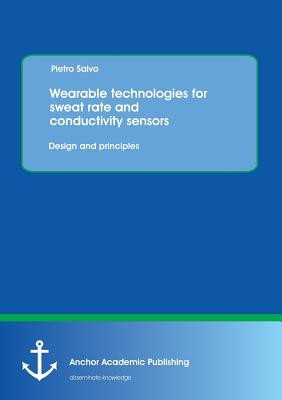
- We will send in 10–14 business days.
- Author: Pietro Salvo
- Publisher: Anchor Academic Publishing
- Year: 2013
- Pages: 88
- ISBN-10: 3954890372
- ISBN-13: 9783954890378
- Format: 14.8 x 21 x 0.5 cm, softcover
- Language: English
- SAVE -10% with code: EXTRA
Wearable Technologies for Sweat Rate and Conductivity Sensors (e-book) (used book) | bookbook.eu
Reviews
Description
Wearable sensors present a new frontier in the development of monitoring techniques. They are of great importance in sectors such as sports and healthcare, as they permit the continuous monitoring of physiological and biological elements, such as ECG and human sweat. Until recently, this could only be carried out in specialized laboratories in the presence of cumbersome, and usually, expensive devices. Sweat monitoring sensors integrated onto textile substrates are not only part of a new field of work but, they also represent the first attempt to implement such an innovative idea on a system which will be worn directly on the body. The objective of this book is to present possible designs and technologies of low cost wearable sweat rate and conductivity sensors integrated onto a textile. The first chapter deals with a preliminary introduction on sweat production and composition, and the applications of wearable devices. Further, the second chapter describes the conductivity sensor, i.e. the geometry, materials and the coupling which includes a temperature sensor for precise measurements are discussed. This is followed by a chapter on the sweat rate sensor, and the technologies employed to fabricate it. Sensors that are based on a) conductive yarns coated with hydrophilic polymers, b) conductive polymer fibres, c) hydrophilic polymers between conductive fabrics and d) humidity sensors are described in detail. Finally, the last chapter provides a study of sweat production in different body areas, the calibration procedure, and summarizes the results which arise from the tests on volunteers.
EXTRA 10 % discount with code: EXTRA
The promotion ends in 20d.11:09:04
The discount code is valid when purchasing from 10 €. Discounts do not stack.
- Author: Pietro Salvo
- Publisher: Anchor Academic Publishing
- Year: 2013
- Pages: 88
- ISBN-10: 3954890372
- ISBN-13: 9783954890378
- Format: 14.8 x 21 x 0.5 cm, softcover
- Language: English English
Wearable sensors present a new frontier in the development of monitoring techniques. They are of great importance in sectors such as sports and healthcare, as they permit the continuous monitoring of physiological and biological elements, such as ECG and human sweat. Until recently, this could only be carried out in specialized laboratories in the presence of cumbersome, and usually, expensive devices. Sweat monitoring sensors integrated onto textile substrates are not only part of a new field of work but, they also represent the first attempt to implement such an innovative idea on a system which will be worn directly on the body. The objective of this book is to present possible designs and technologies of low cost wearable sweat rate and conductivity sensors integrated onto a textile. The first chapter deals with a preliminary introduction on sweat production and composition, and the applications of wearable devices. Further, the second chapter describes the conductivity sensor, i.e. the geometry, materials and the coupling which includes a temperature sensor for precise measurements are discussed. This is followed by a chapter on the sweat rate sensor, and the technologies employed to fabricate it. Sensors that are based on a) conductive yarns coated with hydrophilic polymers, b) conductive polymer fibres, c) hydrophilic polymers between conductive fabrics and d) humidity sensors are described in detail. Finally, the last chapter provides a study of sweat production in different body areas, the calibration procedure, and summarizes the results which arise from the tests on volunteers.


Reviews